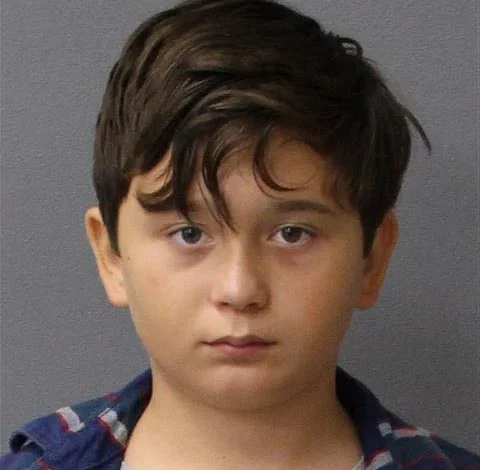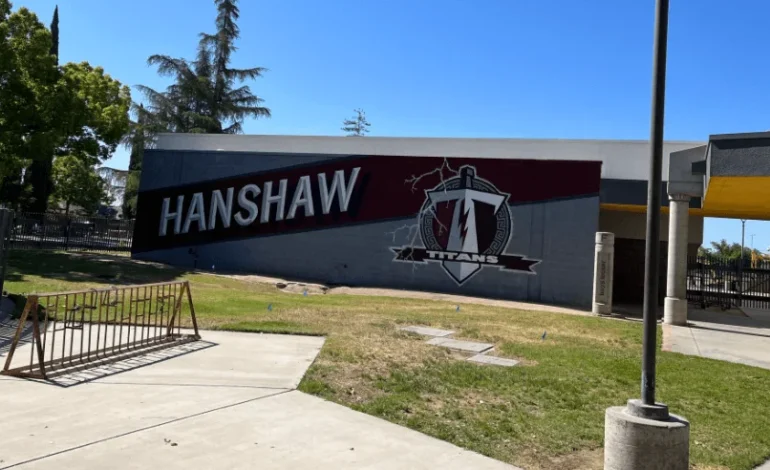
11-Year-Old Carlo Dorelli Arrested for Threatening School Shooting at Creekside and Silver Sands Middle Schools. In a troubling development in Volusia County, Florida, an 11-year-old boy named Carlo “Kingston” Dorelli has been arrested and charged with a serious felony after allegedly threatening violence against two schools
11-Year-Old Carlo Dorelli Arrested for Threatening School Shooting at Creekside and Silver Sands Middle Schools. In a troubling development in Volusia County, Florida, an 11-year-old boy named Carlo “Kingston” Dorelli has been arrested and charged with a serious felony after allegedly threatening violence against two schools. This case has captured significant media attention and stirred concern among parents, educators, and law enforcement officials alike. The arrest marks a grim reminder of the ongoing issues surrounding threats of violence in educational environments, a problem that has been escalating across the United States.
The Volusia County Sheriff’s Office reported that Dorelli was taken into custody following alarming reports from his classmates. According to the allegations, the pre-teen had been showing his peers a disturbing video that showcased an extensive collection of weapons. This act of intimidation was accompanied by verbal threats, further escalating the situation and prompting immediate intervention from school authorities and law enforcement. The nature of the video and the threats it contained painted a clear picture of a potential risk to the safety of students and staff at the targeted schools.
Adding to the severity of the situation, it was revealed that Dorelli had allegedly compiled a list of specific targets. The existence of such a list exacerbated the gravity of the threat, leading to heightened concerns about the potential for actual harm. The authorities’ response was swift, as they sought to prevent any possible escalation of the threat and ensure the safety of the school community. The details of the list and the nature of the intended targets remain under investigation, but the implications of these findings are deeply troubling.
Sheriff Mike Chitwood took to social media to announce the arrest, utilizing platforms like Facebook and Twitter to share photos of the confiscated weapons and images of Dorelli in handcuffs. This approach, while intended to inform the public and underscore the seriousness of the threat, has also sparked debate about privacy and the treatment of juvenile offenders. Sheriff Chitwood’s decision to publicly release such information reflects a broader policy aimed at deterring similar threats and holding accountable those who make them, even if they are minors.
The policy of “perp-walking” students who make threats has generated significant controversy. While intended to serve as a deterrent and to reassure the public of law enforcement’s commitment to handling such cases with gravity, it has raised questions about the ethics of publicly shaming young offenders. Critics argue that this approach can have detrimental effects on the lives of juveniles, potentially exacerbating the impact of their actions and affecting their futures long after the initial incident has passed.
In his announcement, Sheriff Chitwood made it clear that the release of names and photos of juvenile offenders involved in felonies was part of a broader strategy to address and mitigate the issue of school threats. The sheriff’s statement, “I can and will release the names and photos of juveniles who are committing these felonies,” underscores his determination to combat this trend and emphasizes the importance of public awareness in addressing such critical issues.
This incident involving Dorelli is not an isolated case but part of a disturbing national trend. Reports of school threats have emerged from various states, including Alabama, Indiana, and Texas, highlighting the widespread nature of the problem. The increase in such incidents reflects broader societal issues and underscores the urgent need for effective strategies to address and prevent threats of violence in schools.
Authorities across the country are responding to these threats with a stern approach, aiming to deter students from engaging in harmful and disruptive behaviors. This includes not only legal consequences but also educational and preventative measures designed to address the underlying causes of such threats. Schools and law enforcement agencies are working together to develop comprehensive strategies that prioritize the safety of students and staff while also providing support and intervention for those involved.
In addition to legal and preventative measures, the involvement of mental health professionals has become increasingly important in addressing the root causes of these threats. Many experts advocate for early intervention and support services to help students who may be struggling with underlying issues that could lead to violent behavior. This approach seeks to address the problem holistically, rather than solely focusing on punitive measures.
The case of Carlo Dorelli serves as a stark reminder of the challenges facing schools and communities in maintaining safety and addressing threats of violence. It highlights the need for continued vigilance, effective intervention strategies, and support systems for both students and educators. As the situation develops, it is crucial for all stakeholders to work collaboratively to address the complex issues underlying such threats and to foster a safe and supportive educational environment.
In conclusion, the arrest of Carlo Dorelli reflects a broader and concerning trend in school safety and violence prevention. The response from law enforcement and the public discourse surrounding the case emphasize the importance of addressing such threats with seriousness while balancing the needs for privacy, rehabilitation, and deterrence. As the community continues to grapple with these issues, it is essential to remain focused on creating effective solutions that prioritize the well-being of students and the overall s
afety of schools.



